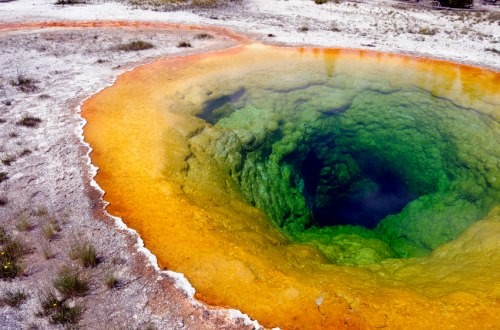Scientists at the University of Alberta have helped make a scientific breakthrough regarding the early origins of Earth’s atmosphere.
Together with earth scientists from the University of Waterloo, Arizona State University, University of California Riverside, and Georgia Institute of Technology, U of A scientists have found evidence that Earth’s transition to a permanently oxygenated atmosphere was riddled with bumps along the way.
Their paper, published this month in Science Advances, uses geochemical data from sedimentary rocks in Western Australia to show that a burst of O2 production by photosynthetic cyanobacteria temporarily increased O2 concentrations in Earth’s atmosphere and shallow oceans roughly 2.5 billion years ago.
“We are tracking atmospheric changes through time to understand how oxygen increased to the level needed to support complex life,” says Rob Creaser, professor of earth and atmospheric sciences at the University of Alberta. “When the Earth first formed, there was no oxygen in the atmosphere. Our analytical facilities here at the U of A allowed us to conduct precise analyses of this rock sample to understand the tempo at which that oxygen built up through photosynthesis.
Creaser’s lab at the University of Alberta in the Canadian Centre for Isotopic Microanalysis is one of only a few in the world with the ability to take the precise measurements of osmium needed to conduct this type of analysis. “Without this type of facility, we wouldn’t be able to write this paper or investigate this process.”
The new data suggest that O2 levels in the Earth’s atmosphere fluctuated until enough O2 finally accumulated to create a permanently oxygenated atmosphere around 2.4 billion years ago, a transition widely known as the “Great Oxidation Event.” “The onset of Earth’s surface oxygenation may have been a complex process characterized by multiple ‘whiffs’ of O2 until a tipping point was crossed,” says Creaser’s former PhD student and UAlberta alumnus Brian Kendall, a professor of Earth and Environmental Sciences at the University of Waterloo and lead author on the paper.
“How and why Earth developed an oxygenated atmosphere is one of the most profound puzzles in understanding the history of our planet,” says Professor Ariel Anbar of Arizona. This new study is a follow up to work published in 2007 by the same group indicating that a small amount of O2 was present on Earth’s surface 2.5 billion years ago.
Now that they have solved the part of puzzle to determine whether O2 concentrations were fluctuating or stable at that time, Creaser and his colleagues hope to take their inquiry a step further address some of the remaining unanswered questions. “One issue is preservation. You can only do this kind of analysis on beautifully preserved samples, and there’s very few of these that are 2.5 billion years old. You’re always somewhat restricted in how far you can push your conclusions.”
Agencies/Canadajournal
 Canada Journal – News of the World Articles and videos to bring you the biggest Canadian news stories from across the country every day
Canada Journal – News of the World Articles and videos to bring you the biggest Canadian news stories from across the country every day




This article does not mention that the rise in atmospheric oxygen triggered the most brutal snowball earth the world has ever known – the whole planet was encased in ice for millions of years. This killed most life on earth, and it was volcanic activity that likely brought the planet out of that glaciation.
How is this news?
Lynn Margulis published this back in the 1970’s and continued until her death.
Naw Jesus did it.